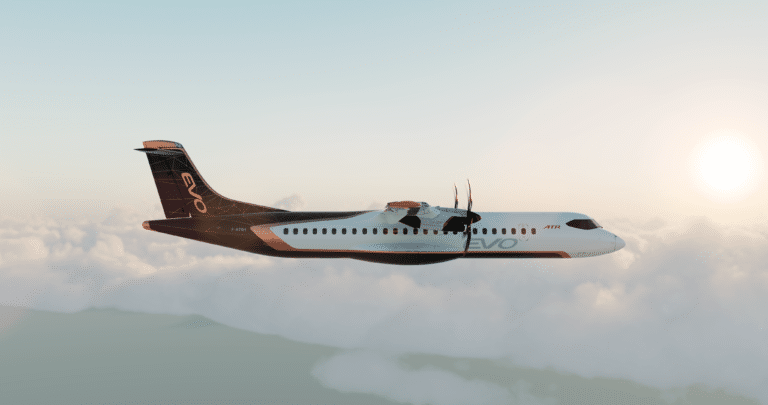Turboprop demand
New deliveries focusing on replacement of current aged fleet
In the next 20 years we expect the global turboprop market to grow by around 2,450 aircraft. This signals a good return to business as we come out of what has been a challenging time for the entire aviation industry.
Two years down the line regional aviation is close to making a full recovery. Despite this, the growth potential lost during the pandemic continues to influence our 20-year projections.
During this time many older aircraft retired but the average age of the turboprop fleet continued to increase. Consequently, aircraft replacement will be a primary driver of demand over the next two decades, accounting for 1,500 new aircraft.
However, our forecast is based on current regulatory and technological environments. In reality, the market context is changing rapidly.
Increasing fuel prices and carbon taxation; the EU’s Taxonomy Regulations combined with greater passenger demand for lower emission travel, means in future the aviation industry will naturally favour low-carbon emitting aircraft, such as turboprops.
New, disruptive technologies, coming onstream from 2030 onwards, will also bring turboprops to the forefront of the aviation industry
Looking forward we are confident that turboprops will expand their market attractiveness and exceed the 2,450 aircraft forecast.

Regional market traffic evolution
Route creation drives growth

Turboprop demand by region
Turboprop deliveries

Connecting the world responsibly
Regional aviation is a lifeline for communities
- Regional aviation plays a vital role in driving economic growth and transforming lives around the world.
- From the largest cities to the most remote regions, regional air travel connects people, communities and businesses in an innovative, sustainable and modern way.
- Turboprops specifically have outstanding performance on short runways and in rugged terrain. They are the only aircraft keeping 34% of the airports with scheduled services connected to the outside world.
- In other instances, some small communities have insufficient demand to sustain routes profitably from their home airport with a module bigger than a turboprop or a regional jet.
Regional aviation fosters local economies
- Regional aviation can have an amplifying effect on countries growth, depending on the state of development and its pre-existing transport links. The rate at which regions develop depends to a large extent on the quality of their connectivity, actually regional air transport plays a prominent role in territorial cohesion.
- For example, in the US regional aviation alone supports 1.1 million jobs and a 1% increase in an airport with subsidised services is linked to 0.12% increase in per-capita income.
Turboprops reducing regional aviation’s CO2 footprint today
- As we look to the future it is is imperative that the industry contributes to the 2050 net zero carbon emission commitment to remain a powerful catalyst of economic recovery and growth.
- Sustainable Aviation Fuel (SAF) and new disruptive technologies will play a big role in this journey. SAF is the intermediate opportunity to decarbonise in the short to medium term. Disruptive technology will be the solution in the long run.
- However, we recognise climate change is happening today and we need to act now. Turboprops actively address the climate challenge by operating efficiently on regional routes.
Right now, if regional jets were replaced by turboprops in the USA, it would save:
CO2 reductions (Tonnes) by stage length

Most efficient engine technology for regional aviation
- Replacing regional jet activity with turboprops would drastically reduce CO2 emissions.
- For example, in the US if regional jet capacity on routes up to 500NM (926 km) were replaced by turboprops there would be an immediate 28% drop in CO2 emissions.
Europe & CIS
Right now, if regional jets were replaced by turboprops in Europe, it would save:
EU domestic CO2 reduction (tonnes) by journey length (if regional jets were replaced by turboprops)

Environment is also a key challenge and main driver for change across the entire commercial aviation ecosystem in Europe. A reduced carbon footprint is already a feasible reality. If turboprops were flown instead of regional jets on routes up to 500NM (926km), the annual reduction in carbon emissions would be equivalent to the carbon sequestered by a forest the size of the Balearic Islands.
Turboprops deliver reduced CO2 on shorter routes
CO2 emissions significantly lower than regional jets
Regional jets emit more CO2 than turboprops, but the environmental impact is even more exaggerated on short-haul flights as jet technology is not optimised for this sector.

E-commerce driving freighter fleet growth
Faster deliveries defining value driver for e-commerce
South-East Asia E-commerce Global Merchandise Value ($Bn)

- For regional freighters, the evolution of the air cargo demand is highly dependent on the Express segment, which represents the majority of the global fleet.
- As such the most significant trend driving growth in the regional freighter fleet market – both now and in the next 10 years – is e-commerce.
- Online retail, already growing fast in mature markets, saw significant acceleration due to pandemic lockdowns and greater disposable income to spend on goods instead of services.
Growth opportunities for freighter fleet
Significant untapped opportunities in emerging markets
Current global turboprop freighter fleet 3-9 Tn

- Currently the distribution of the regional feeder fleet is dominant in mature and economically developed markets.
- We expect South-East Asia and LatAm to become areas of increased regional freighter demand as customer expectations for fast delivery expands beyond key primary gateways in each region.
- With China as the largest e-commerce market, we expect cargo expansion beyond East China will drive additional opportunities for regional feeders.
Turboprop freighter demand focuses on 70-seater segment

Optimal aircraft for availability, operating cost and capacity
- The air cargo market is highly price-sensitive with operators continually seeking the best economic returns. This is why turboprops continue to be the market’s preference.
- Growth in the turboprop freighter fleet will be determined by feedstock availability and market needs. For example, the average age of the 30-seater turboprop passenger fleet is 26 years – well beyond conversion age; while 50-seaters are also scarce.
- As such, 70-seaters will become the aircraft of choice for operators with ample feedstock for conversions as well as new-built freighters and larger capacities to cater for increased volumes.
Get in touch with ATR
Contact UsGet in touch
Please complete the form below to get in touch with us.










